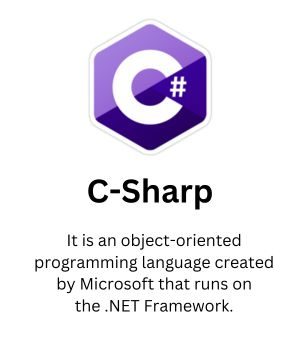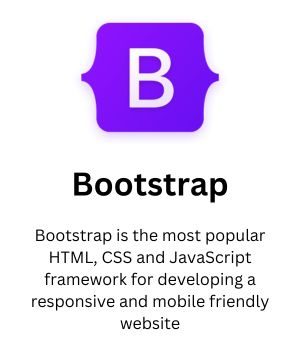
We specialize in providing cost effective Custom Software And Application Development Web — Mobile — Desktop — Software Request Quote
 Crafting software solutions that drive success
Designing the software architecture, writing code, and testing the software to ensure it meets the desired specifications.
Request Quote
Crafting software solutions that drive success
Designing the software architecture, writing code, and testing the software to ensure it meets the desired specifications.
Request Quote

 Building the future through code
Join our dynamic network of BJS, where connections flourish and opportunities abound for professional growth.
Request Quote
Building the future through code
Join our dynamic network of BJS, where connections flourish and opportunities abound for professional growth.
Request Quote
 setREVStartSize({c: 'rev_slider_3_1',rl:[1240,1024,778,480],el:[700,700,700,800],gw:[1300,1100,900,500],gh:[700,700,700,800],type:'standard',justify:'',layout:'fullwidth',mh:"0"});if (window.RS_MODULES!==undefined && window.RS_MODULES.modules!==undefined && window.RS_MODULES.modules["revslider31"]!==undefined) {window.RS_MODULES.modules["revslider31"].once = false;window.revapi3 = undefined;if (window.RS_MODULES.checkMinimal!==undefined) window.RS_MODULES.checkMinimal()}
setREVStartSize({c: 'rev_slider_3_1',rl:[1240,1024,778,480],el:[700,700,700,800],gw:[1300,1100,900,500],gh:[700,700,700,800],type:'standard',justify:'',layout:'fullwidth',mh:"0"});if (window.RS_MODULES!==undefined && window.RS_MODULES.modules!==undefined && window.RS_MODULES.modules["revslider31"]!==undefined) {window.RS_MODULES.modules["revslider31"].once = false;window.revapi3 = undefined;if (window.RS_MODULES.checkMinimal!==undefined) window.RS_MODULES.checkMinimal()}
AS FEATURED ON:







Simplifying IT
for a complex world.
Cost Effectiveness
We offer affordable IT solutions that help you reduce costs and improve your bottom line.

Innovative Technology
We stay up-to-date with the latest technology trends and offer innovative solutions that help you stay ahead of the competition.

Scalability
Our solutions are scalable and can grow with your business, ensuring that you get the most value out of your investment.

Industry Expertise
We specialize in serving specific industries, such as healthcare, finance, or manufacturing, and offer tailored solutions that meet your unique needs.
Who We Are
About
BJS Soft Solutions is an IT Solutions organization having over 10 years of involvement with Customized Web/Mobile Applications plan and advancement. We offer a wide scope of administrations going from basic substance sites to the most perplexing electronic applications.
Customer happiness and gratification along with brilliant user experience has consistently been our prime focus that gives our clients a winning edge over others. Due to our competitive pricing, nature of work, and incredible client support, customers who require an appropriate accomplice generally stay with us long.

What BJS Soft Solutions Do
Web Development
We offer boundless of technologies for Fast, Secure, SEO Friendly, and Responsive websites. We are expert in ColdFusion, PHP, Shopify, Joomla and WordPress.
MobileApp Development
Our professionals are expert in developing fully functional Cross and Native Apps for iOS and Android. We offer you the best user experience that can make your business grow.
UI / UX Design
UI/UX design refers to the process of designing user interfaces and user experiences for digital products or services. UI/UX design aims to create intuitive product.
QA and Software Testing
We strive for excellence over success. That’s why we provide QA testing both as an in- dependent service and as a part of every project we undertake.
Enterprise Development
Our software development team can help you modernize your enterprise to achieve higher operational efficiency, automate processes, and increase customer satisfaction.
DevOps Solutions
We provide your business with a secure digital infrastructure that can help you manage security risks. With our expertise and cutting-edge tools for developing,
Tools and Technologies
We are dedicated to providing cutting-edge tools and technologies that empower businesses to thrive in the digital age. Explore our comprehensive range of solutions designed to enhance productivity, streamline operations, and drive innovation.



















Process We Follow
The software development process for creating content for a website typically involves several stages. Here’s a high-level overview of the process.

Research & Design
This is an academic, scientific, or professional undertaking to answer a research question. We research, such as qualitative or quantitative, descriptive, correlations.
Software Development Methodologies
Software Development Methodologies are an integral part of your overall project. It is critical to think in concrete terms about what methodologies we use. At BJS we offer the best software methodologies such as Agile, and Scrum.


Best Results
Proper project management and top software development techniques ensure the best possible results within a given deadline.
Why To Choose Us
Here are just a few reasons why you should work with BJS Soft Solutions to take your business to the next level
Specialized Customer Support
We offer client service. Our accomplished staff makes all that could be within reach to determine every one of your questions nonstop.
Dedicated Team Model
We have a group of exceptionally gifted and devoted developers who work for just a single CLIENT at an at once or more tasks.
One Stop Shop
We offer system, plan, design and development, all under one rooftop. A full-specialist organization can set aside your time and cash.
Competitive Pricing
We give great, specially crafted moderate solutions for each business and guarantee that our costs are astoundingly competitive.
Quality Assurance
Quality assurance is a crucial segment of the development cycle and you can trust our highly capable and experienced quality testing masters.
Security and Privacy
We respect your privacy and pay special attention to it, furthermore we also welcome you to sign NDAs before commencing any work.
Build a Brand that Customers Love
Community
We help organizations to recognize their development openings. We are trusted by high-development new businesses, startups, and driving global brands. We make you more brilliant.
We have the most gifted and talented representatives to take your projects under the umbrella of care and responsibility and present you with the most fulfilling and top-quality online administration. We guarantee to hold you back and handle your business during good and bad times. We wholeheartedly welcome you, regardless of what sort of arrangements you are searching for, we intend to be there to deliver.

Our Client Says

I have worked with the owner, Zain, over the past few months and found him to be a focused and knowledgeable software developer with a large staff (I did not work with his staff so I cannot comment on them). He is available most or all hours of the day or night which is convenient if you are in a different time zone.
John Lundberg

I have been using the BJS team for over a year and they consistently provide quality work completed in a timely fashion. I will continue to send my SEO and web development work to them for years to come!
Billy Bierlein

Responsive company that always deliver as promised. If there is complications they always solve it. Great knowledge in PHP.
Henrik Gustafson
Increasing Customer's lifetime value
Rapidly develop your group with the correct designing group from BJS Soft Solutions. New businesses and ventures rely upon our specialists to take care of issues, convey code, and construct items for the world’s business sectors.
+
Years
Proven Track Record
%
Customer Satisfication
+
Projects
We have Completed
+
Client Across Countries
+
Years
Proven Track Record
%
Customer Satisfication
+
Projects
We have Completed
+
Client Across Countries
